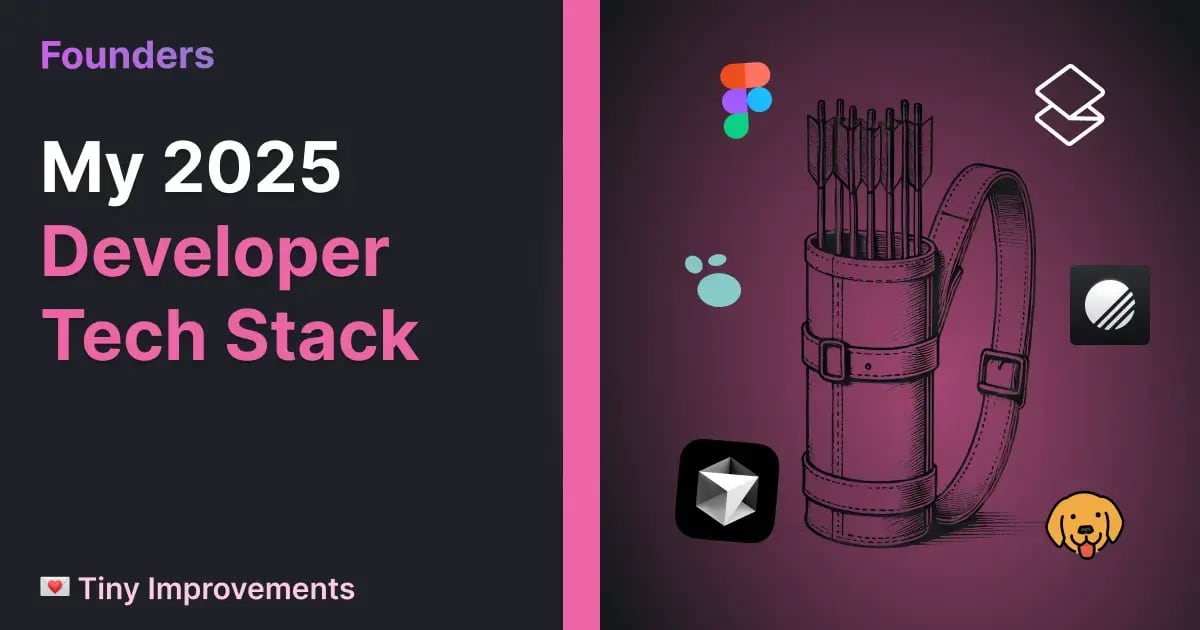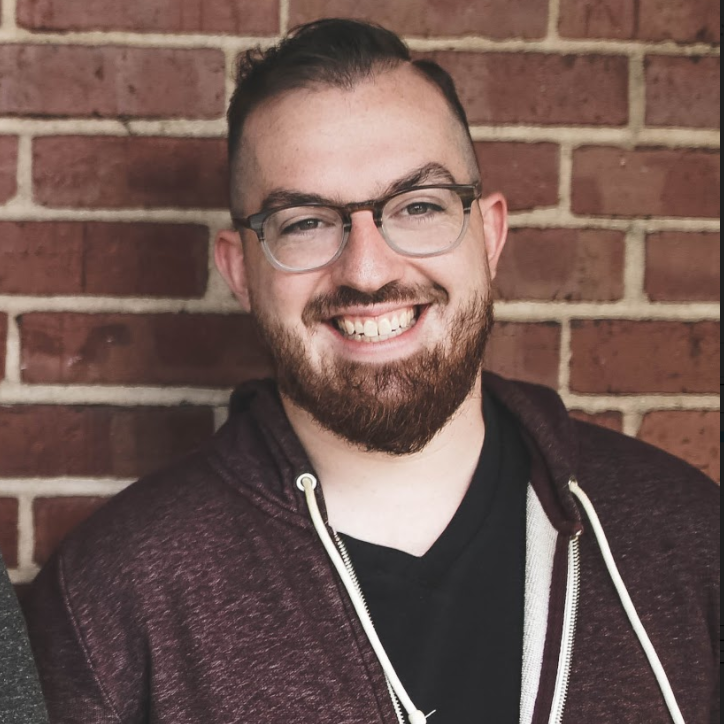
The Big idea
The right tools don't just save time-they amplify your focus and flow, making it easier to do your best work. This is what I'm using to stay productive in 2025.
Brought to you by Superhuman
This is how I get things done
My work as an engineer and founder is split between two main activities:
- Building products and features
- Building the systems and processes that allow me to build products and features (I spend more time here each day)
I tend to stick with tools that amplify my productivity, help me get stay organized, and ones which don't get in the way when I'm finding flow state.
The best tools find their way into my workflow without much hassle.
Princples for choosing tools
While I never consciously set hard rules for choosing the tools I use, I have found some consistent principles of what I look for in a tool:
- Simplicity: I prefer tools that are simple to use and understand. I don't want to spend time learning how to use a tool - I want to spend time getting things done.
- Portability: I prefer tools that are easy to set up and move between devices. This means that cloud sync is a huge plus for me - if my work laptop ever gets launched into the sun, it should be easy to set up a new machine and get back to work.
- Reduced key
mantool risk: Developers are notorious for customizing the hell out of their tools, often to a fault. I don't ever want to feel like I can't get things done on someone else's computer. My team does lots of pair programming - and I never want to feel lost on someone else's machine because without my dotfiles.
These are the tools I use in 2025
Alright, let's get into it. This is the tech stack I'm using in 2025:
Hardware
-
Laptop: Macbook Pro 14" - Up until a few weeks ago, I was using a 14" 2021 M1 Macbook Pro. I recently swapped to a 2023 variant with an M3 chip. These computers have been, without a doubt, the best I've ever used. I've switched between Windows and MacOS over the years - we're in an era where hardware is what makes the difference. These MFs are fast, and the battery life is incredible.
-
Phone: Pixel 9 Pro - Hot take: I'm not a huge fan of some of the UX on IOS. My Pixel takes stunning photos, and integrates with all the things I love for home, work, and play. Even still, I switch between Android and IOS every few years, because I believe it's helpful to know and understand what both options are like. It's a great way to keep learning and stay informed.
Tools
-
Note-taking: Logseq LogSeq is a fantastically simple, privacy-first, markdown-based note taking app for building knowledge graphs. I switched to LogSeq last year from RoamResearch, and have been very happy with the experience. If you've tried Notion and haven't quite gotten along with it, I'd recommend giving LogSeq a try.
-
Email: Superhuman - Superhuman is a stunningly email client designed with efficiency in mind. It works with my Gmail accounts, and lets me triage, filter, and respond to emails confidently - and without distraction. Their design team has done an incredible job of creating a product that's both beautiful and functional.
-
Swiss-army knife:Raycast - Raycast integrates with MacOS as a replacement for Spotlight (the little window that pops up when you hit command + Space on most Macs). It's more than just a launcher - I use it for launching apps, translating english ↔ spanish, checking fligth statuses, and countless other utilities during my workday.
Devtools
-
IDE: Cursor - [https://www.cursor.com/] is a fork of VS Code that is highly customized for AI-assisted coding. I have it customized with a set of prompts for each of my projects, and to index docs for libraries I use. While it's not a replacement for thinking - it's like having a very good pair programmer at your side all day. An instant productivity boost.
-
HTTP Client: Bruno - I started using Bruno last year for testing and integrating with APIs. It's similar to Postman, open-source, and includes some really cool features, like a native git integration, so you can share your API specs with your team.
-
Design: Figma - I've been using Figma for years, and over the past year have started using their layout tools to prototype interfaces as I build (shout out to my pal Drucial for getting me up to speed on autolayout!). I believe design is a critical skill for any engineer, and right now, Figma is the best tool for the job.
-
Project Management: Linear - Linear is the project management tool that we use at Craftwork for keeping our ever-changing backlog in order. It's like Jira, but with all of the garbage ripped out and replaced. If you haven't used it before, give it a try.
..and more. There's definitely more that I use day to day - I'll share a follow-up post soon with details about the stack I use for building products - the frameworks, libraries, and SaaS products I use to build Craftwork, this site, and APIs You Won't Hate.
Your tools should work as hard as you do.
Superhuman keeps your inbox in check, so you can focus on building. Stay productive in 2025: prioritize, reply, and save 4+ hours a week. Thanks to Superhuman for giving Tiny Improvements readers their first month free.
What did I miss?
Is your favorite tool missing from the list? Did I miss something that's critical to your workflow? The best way for me to find out is by sharing - slap the reply button and let me know what I'm missing.

